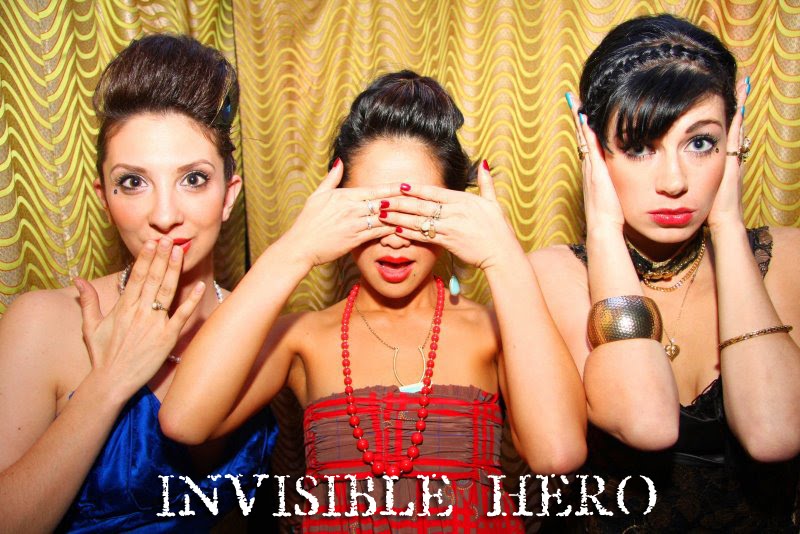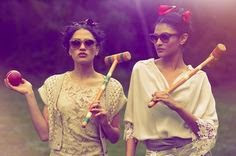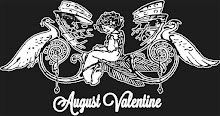The Long Lost Art of Croquet......its not so lost...and closer than you think.
Easter is over, BBQ season is in full swing and people are making their way out into the yard again. Since our beloved lawn Jarts have been outlawed and flag football is far to manly for us ladies. Lets explore the fashionable and clever game of Croquet. A wonderful way to sip cocktails and engage in sports without all the dirt and sweat!
Croquet isn't as inaccessible – or vicious as you may have previously thought. All you need to play is a reasonably flat patch of grass and simple croquet set – and you can pick up a new, basic starter set for as little as $30. So whether you're sipping mint juleps and nibbling tea sandwiches out in the garden or just whacking some balls around over beers with friends in the backyard, there is a croquet game for you.
Its totally acceptable and encouraged to arrive for croquet in the most festive dress you can find which I personally love I can never find enough excuses to wear party dresses. Large hats, and trend setting flats also play a huge roll on the field. Everyone knows you must look like the envy of the apple orchard when swinging your Mallet and annihilating your opponent with a catty grin on the corner of your mouth. You can of course play in jeans and a T as well but whats the fun in that?
The rules of the game are really quite simple despite what you may have heard! You must lay out your course (or get some strapping lad standing around to do it for you) There are several variations to the croquet court but the one listed below is the standard. As you become more experienced with the game you can create courses that are more difficult and less basic.
The Wickets and Stakes
The nine wickets and two stakes are arranged in a double-diamond pattern as shown in the diagram above. If you are playing on a smaller court, the distances shown should be scaled down in proportion to the length and width of the court. The wickets should be firmly planted in the ground, and the width of the wickets should be uniform throughout the court.
The Balls
For a two- or four-player, two-sided game, you need four balls. The colors usually used are blue, red, black, and yellow. One side (with one or two players) plays with blue and black, and the other with red and yellow. For a six-player team game, you need six balls. In team play, one side plays blue, black, and green, and the other side plays red, yellow, and orange. In "one-ball" games, you need one ball per player.
The Mallets
Each player uses a mallet. Only the striking (end) face may be used to strike a ball, unless the players have agreed to allow the use of "side" shots or other shot-making variations.
Object of the game
The object of the game is to advance the balls through the course by hitting them with a mallet, scoring a point for each wicket and stake made in the correct order and direction. The winner is the first side to score the 14 wicket points and 2 stake points for each of its balls, unless the game is played to a time limit and time runs out before that happens, in which case the team with the most points at the end of the time period wins
 Order of play and starting the game
Order of play and starting the game
Starting point:All balls are played into the game from a spot halfway between the finishing stake and wicket #1.
When four balls are played by two sides (singles — two players competing against each other playing two balls each; or doubles — two sides of two players each):
The sides should toss a coin to determine the order of play. The side winning the coin toss has the choice of playing first and third with blue/black or second and fourth with red/yellow. The order of play throughout the game is blue, red, black, yellow.
Six balls played by two teams of three players:
The side winning the coin toss has the choice of playing first, third, and fifth with blue/black/green or second, fourth, and sixth with red/yellow/orange. The order of play throughout the game is blue, red, black, yellow, green, orange.
Six balls played by three teams of two players:
The start of the game is determined by a player from each of the three sides shooting to a predetermined target such as a wicket or stake, with the closest to the target choosing which colors to play. The second closest chooses next, with the third place playing the remaining balls. The sides consist of blue/yellow, red/green, and black/orange. The order of play is blue, red, black, yellow, green, and orange.
Order of Play
After all balls have started the game, play continues in the same order until a ball is staked out. When a ball is out of the game, the remaining balls continue in the same order, skipping the ball that has finished the course.
“One-Ball” Game
Many croquet players like to play singles with only one ball per side, the winner being the player who advances his or her ball around the court first. This popular variation is played with the same rules as regular singles or doubles croquet, but any number of players from two to six can play. The colors may be drawn by lot to determine the order of play.
Shots
If a player plays out of turn, there is no penalty. Any ball moved during the out-of-turn play is replaced to its position prior to the error and play recommences properly. If an out of turn is initially condoned (not discovered) but then later discovered, only the last ball played out of turn is replaced and the correct ball then proceeds. Example: if red plays, then blue plays, then yellow plays, yellow is replaced, and then red plays correctly.
If the striker takes a swing at his/her ball and misses entirely, the miss counts as a shot and the turn ends, unless the striker had a second "bonus" shot.
If the striker's mallet accidentally hits another ball other than the striker ball, the shot must be replayed, but with no loss of turn.
Scoring a Wicket
A has not started to score the wicket. B has started to score the wicket. C has not scored the wicket. D has scored the wicket. |
Each ball can score wicket and stake points for its side only by going through a wicket or hitting a stake in the proper order and direction. Going through a wicket out of order or in the wrong direction is not counted as a point gained or lost. A ball caused to score its wicket or stake during another ball's turn earns the point for its side, but no bonus shot is earned as a result.
A ball scores a wicket point only if it comes to rest clear of the playing side of the wicket. If a ball passes through a wicket but rolls back, it has not scored the wicket. An easy way to determine if a ball has cleared a wicket is to run the side of the mallet head down the plane of the playing side of the wicket. If the mallet head touches the ball on the way down, it has not cleared the wicket; if the mallet head does not touch the ball, it has cleared the wicket! Bonus shots
The striker earns one bonus shot if the striker ball scores a wicket or hits the turning stake. The striker earns two bonus shots if the striker ball hits another ball (a "roquet"). However, the maximum number of bonus shots earned by a striker is two; there is never a time when a striker is allowed three shots. (See the "Exceptions" section below for examples.)
If two bonus shots are scored by striking another ball, the first of these two shots may be taken in any of four ways:
- From a mallet-head distance or less away from the ball that was hit (“taking a mallet-head”)
- From a position in contact with the ball that was hit, with the striker ball held steady by the striker's foot or hand (a “foot shot” or “hand shot”)
- From a position in contact with the ball that was hit, with the striker ball not held by foot or hand (a “croquet shot”)
- From where the striker ball stopped after the roquet.
Bonus shots may not be accumulated. Upon earning a bonus shot by scoring a wicket, hitting the turning stake, or roqueting another ball, any bonus shot previously earned is forfeited. For example, if a ball roquets a ball and in that same stroke the striker ball hits another ball, the second ball hit is not a roquet and remains where it comes to rest (with no deadness incurred on that ball).
EXCEPTIONS: Two extra shots are earned when the striker ball scores two wickets in one shot. If the ball also hits the turning stake after scoring two wickets, two strokes are earned, not three. Conversely, if the striker ball scores the seventh wicket and hits the turning stake in the same shot, it earns two shots. After the striker ball roquets another ball, it does not earn any extra shots for hitting it again in the same turn before scoring the next wicket in order. However, there is no penalty for hitting the ball again.
These are of course the basics and once you get started there are many fun and exciting variations to this game!








No comments:
Post a Comment